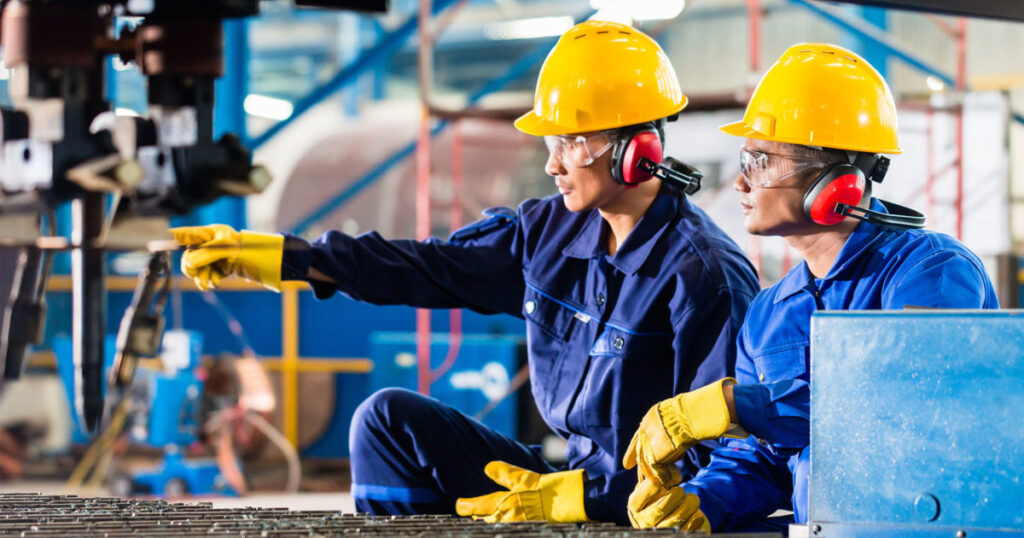It’s easy to view in the fast-moving industrial landscape today how safety and maintenance are critical to operations and for the well-being of the workers in an industry. Industrial safety means more than compliance with guidelines; instead, it refers to a secure environment where risks are held at bay and therefore allowed for productivity. In modern maintenance practice, there is always proper monitoring in ensuring equipment and machinery are in their finest state and not at risk for any breakdowns that may trigger long, costly downtimes. All these together stand for a better resilient, reliable industry.
Do Read:
How Much Can You Get From Social Security? Find Out Now
Key Issues of Industrial Safety and Maintenance
Gone are the days when elementary requirements for industrial safety and efficient maintenance are satisfactory. This is where the situation varies among different industries as they are challenged to meet a high threshold of safety and low-cost maintenance. Let’s discuss two of the biggest challenges ahead and how modern solutions will come to answer those issues.
Evolving Safety Standards and Compliance
As industries evolve, regulations regarding safety continue to change. Companies’ protocols must constantly be altered to accommodate these shifting standards, and not adhering to them leaves an entity vulnerable to fines and a loss of employee and customer trust.
Effective Management of Maintenance Expenses
The balance between keeping regularity and controlling costs is always a juggling act. Traditional kinds of maintenance are expensive and inefficient, usually creating the reactive mentality of “fix when broken.” This affects budgets as well as raising the likely chance of break downs of surprise kinds that bring higher costs.
Modern Tools Driving Change in Industrial Safety
Technological advancement has led to creating tools that ensure safety and maintenance at the industrial levels. Some of the powerful tools to bring about changes are highlighted below.
Predictive Maintenance Technology
Predictive maintenance has dramatically changed the way that industries keep their equipment in good condition. This technology, primarily through sensing and data analytics, monitors equipment conditions in real time, thus enabling companies to predict and handle any prospective problems before they suddenly become significant issues. This proactive approach reduces the impact of down time, increases the usage of the same equipment, and helps control costs.
Real-Time Data Monitoring and Analysis
Data is power. Real-time monitoring tools enable the companies to exactly know what goes on around and with the equipment. Such tools detect early hazards, inefficiencies, or aberrant patterns. Hence, companies are able to intervene in due course and ensure a safer workplace.
Safety Management Software and Automation
Safety management software can automatically track compliance, training, and incidents. Many of the platforms also integrate automation tools to eliminate work on repetitive tasks, so maintenance requirements for safety do not add to the staff workload.
Advancements in Industrial Maintenance Strategies
Modern maintenance strategies include preventive and efficient maintenance more than traditional reactive strategies. The two strategies are:
Condition-Based Maintenance
Condition-based maintenance is a policy that bases equipment health assessment on up-time data. Unlike scheduled maintenance, it minimizes over-servicing and only performs the required action when conditions necessitate action. This reduces more cost and enhances equipment reliability.
Follow the Lean Maintenance Practices
The concept of lean maintenance ensures proper optimization of processes in terms of maintenance to eliminate unnecessary tasks and streamline all processes. The focus on only those necessary activities in the process of maintenance helps reduce waste, minimize downtime, and maximize the usage of resources, hence ensuring better overall productivity.
Best Safety Practices for Industry
While having the right tools and strategies is important, good best practices in safety is even more important. Two such practices that considerably enhance workplace safety have been explained below:
Culture of Safety
From this perspective, workers must be imbued with a safety-first attitude. Communicative employees, recognition of their achievements in safety, and adequate resources to contribute to the safety consciousness will certainly create a stronger and safer working culture wherein everyone is responsible for his or her safety as well as that of their colleagues.
Ongoing Training and Development
Procedures for safety and maintenance change; thus, the employees should be refreshed with this knowledge. In that way, workers can be exposed to regular training and skill-building courses to handle safety and effectiveness in operations and minimize the risk of injuries and maintain adherence to present standards.
Benefits of Implementing Advanced Safety and Maintenance Solutions
Modern safety and maintenance technology and practices offer many benefits besides direct operational benefits.
Improved Productivity and Effectiveness
When maintenance is proactive as well as having safety measures streamlined, productivity naturally increases. Modern solutions reduce the number of hours spent on unplanned repairs, minimize downtime, and allow workers to focus on their work, all factors that favor a smooth flow.
Minimized Operational Costs
The planned outages due to unscheduled breakdowns are controlled, and the maintenance schedule is optimized to minimize costs. Predictive and condition-based maintenance reduce costly emergent repair requirements, and the safety automation tools reduce compliance-related expenses, and therefore, provide long-term financial benefits.


